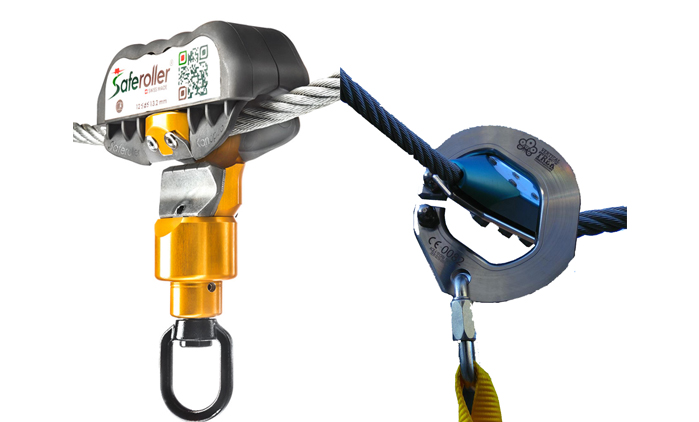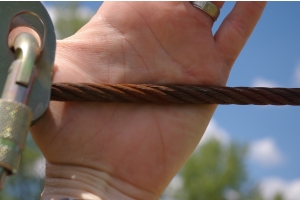Continuous Belay Systems and Smart Belay Systems for Challenge Courses

Challenge courses are a great way for people of all ages to get exercise, learn new skills, and have fun. However, they can also be dangerous if not properly supervised. That's why it's important to use the right safety equipment, including a continuous belay system or smart belay system.
A continuous belay system is a type of belay system that uses a segmented or continuous belay cable or track that a lanyard or trolley connects to once without transferring. A lanyard is connected to the belay cable or track with a hook or trolley that can only come on and off at the start and end of the course or with a special tool used by staff or monitors. The lanyard is then attached to the participant’s harness. A continuous belay system prevents users from becoming unclipped while in the air on the ropes course.
A smart belay system is a type of modern lanyard system that uses interconnected components or sensors to monitor the safety of the person using the lanyard. If the sensors detect that one end of a lanyard is open, they prevent the other end from also being opened, thus keeping the participant locked into the belay system unless they are at the start or end of the course, or a staff member intervenes with the proper tool.
Both continuous belay systems and smart belay systems are very safe and reliable. However, there are some key differences between the two systems.
Continuous Belay Systems
- Continuous belay systems are while easier to use are more expensive to install and maintain.
- Continuous belay systems can be used with a variety of different types of ropes courses and aerial adventure park designs as well as lanyards and harnesses.
- Continuous belay systems are not as sensitive to user error as smart belay systems.
Smart Belay Systems
- Smart belay systems are less expensive than continuous belay systems with many systems requiring zero course installation or modification, simply the use of a new lanyard.
- Smart belay systems have their own lanyards but can be used on a variety of ropes course and zip line designs and with most harnesses.
Smart belay systems are more sensitive to user error than continuous belay systems. - Ultimately, the best type of belay system for a challenge course will depend on the specific needs of the course and the staff operating it. If cost and ease of use are the most important factors, then a smart belay system may be the best option. However, if money is no option, then a continuous belay system may be the best option.
Here are some of the benefits of using continuous belay systems and smart belay systems on challenge courses:
- Increased safety: Continuous belay systems and smart belay systems can help to reduce the risk of serious injuries from falls and misclips.
- Reduced liability: If a participant is injured on a challenge course, the course operator may be held liable. However, if the course operator is using continuous belay systems or smart belay systems, they may be able to reduce their liability.
- Improved customer satisfaction: Participants are more likely to have a positive experience on a challenge course if they feel safe. Continuous belay systems and smart belay systems can help to create a safer environment for participants, which can lead to improved customer satisfaction.
If you are considering using continuous belay systems or smart belay systems on your challenge course, it is important to do your research and choose the system that is right for you.








